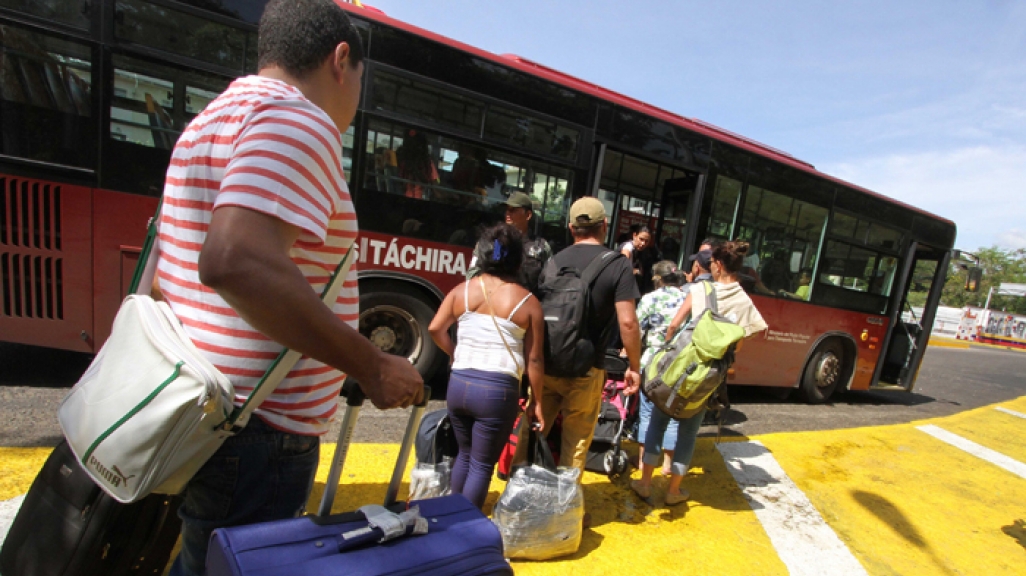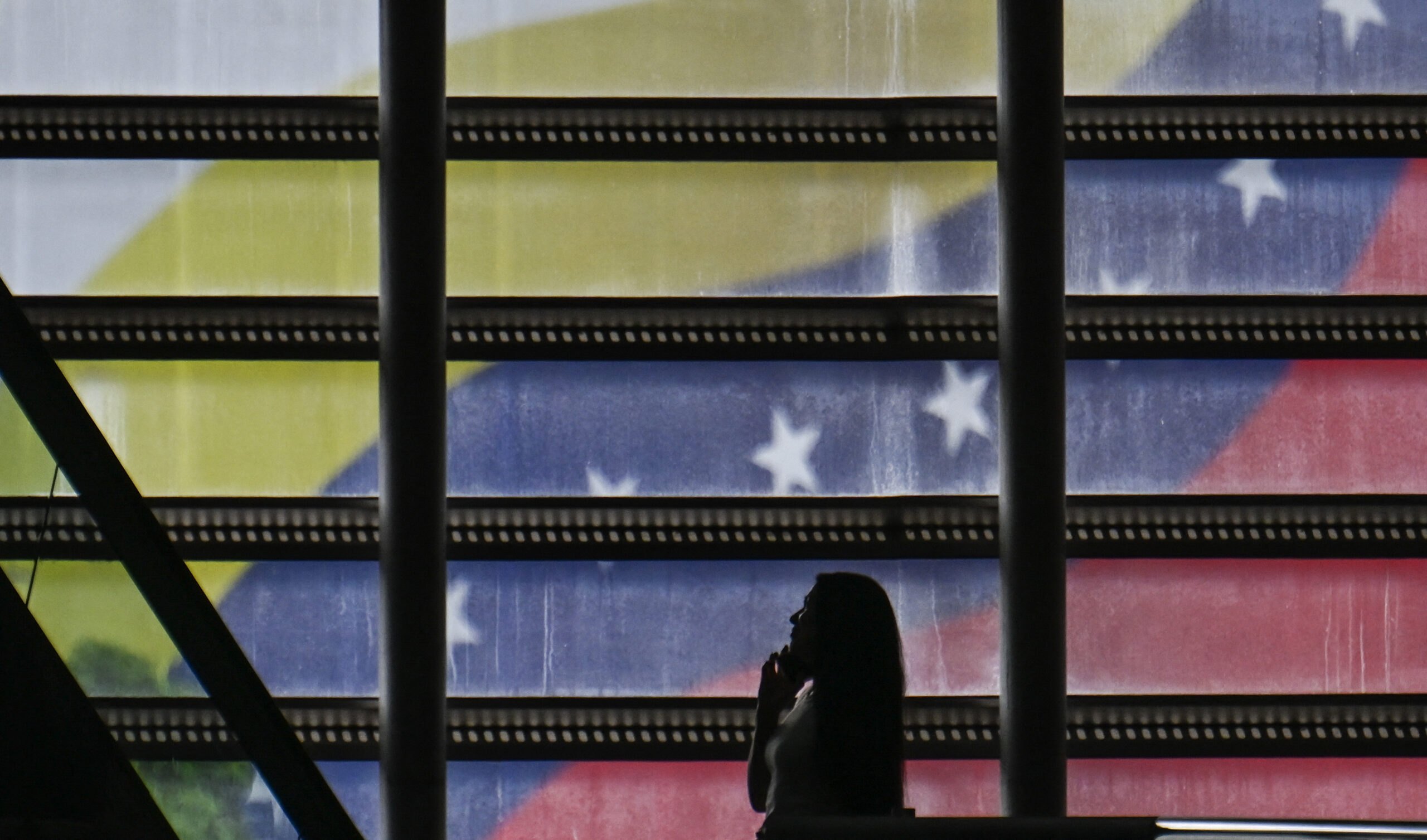Explainer: The Colombia-Venezuela Border Conflict
Explainer: The Colombia-Venezuela Border Conflict
The conflict is shutting down commerce along a border longer than the one between Texas and Mexico.
On August 20, Venezuelan President Nicolás Maduro issued a decree closing two key crossings along the country’s eastern border with Colombia. Since then, he’s closed four more, shutting down critical sections of the 1,451-mile Colombia-Venezuela border—which is longer than the one shared by Texas and Mexico.
From August 21 through September 7, more than 20,000 Colombians living in Venezuela have returned to their country of origin; of those, 1,467 were deported, and another 18,619 returned on their own, albeit under claims of intimidation by Venezuelan security forces in many cases, according to a September 8 report from the UN Office for the Coordination of Humanitarian Affairs (OCHA). Some 5 million Colombians live in Venezuela.
Timeline of the Recent Conflict
August 19: Three Venezuelan soldiers and one civilian are injured in a shootout during an anti-smuggling operation at the Colombia-Venezuela border.
August 20: Maduro issues a decree to close off two border crossings in the state of Tachira for 72 hours.
August 21: Maduro declares a “state of exception” for five municipalities in Tachira. This move suspends constitutional protections there, including rights to publicly assemble and protest, and gives authorities the ability to conduct warrantless search and seizures. Maduro deploys 1,500 soldiers to the state in addition to the 500 permanently stationed there, and says he’s keeping the border closures in effect “until further notice.”
August 22: Venezuelan soldiers reportedly start going house to house in search of people in the country illegally. Deportations pick up pace.
August 26: Colombian President Juan Manuel Santos visits the border city of Cucuta to address the hundreds of Colombians deported from Venezuela. Venezuelan and Colombian foreign ministers meet in Cartagena.
August 27: Colombia and Venezuela recall their respective ambassadors.
September 2: Colombia’s Foreign Minister María Ángela Holguín confirms that Venezuela deported Colombians from Caracas. Seventeen foreign ambassadors in Colombia also travel to Cucuta to discuss the humanitarian situation there. Santos declares an economic emergency in Colombia along the Venezuelan border.
September 4: Venezuelan Vice President Jorge Arreaza announced that 350 registered students living in Venezuela and studying in Colombia would be able to cross the border to get to school.
September 7: Maduro closes the Paraguachon border crossing in the northern state of Zulia, home to Venezuela’s second-largest city of Maracaibo, and sends 3,000 troops there. He also issues a similar “state of exception” to three Zulia municipalities, suspending constitutional protections. The suspensions will remain in place for 60 days, with the possibility to extend for another 60, potentially through the country’s December 6 legislative elections. OCHA says some 3,400 deported and returned Colombians are staying in shelters and hotels in and around Cucuta.
The impact on business in the area has been immediate. Business leaders in Tachira say the area lost some $60 million in the first 20 days of the conflict. In Zulia, hotel owners are preparing for their first weekend without Colombian tourists, who normally occupy some 60 percent of hotel rooms on weekends.
Adding additional strain to the region, last year Maduro suspended remittances to Colombia, which cut off some $500 million in income to Colombia per year.
Venezuela is Colombia’s fourth largest destination for exports, after the United States, the European Union, and Andean Community countries. An estimated four-fifths of all Colombia-Venezuela trade takes place by land, and provides some 50,000 jobs directly and another 250,000 indirectly. In 2009, Venezuela sold some 4.5 million gallons of gas per month to Colombia at prices in between the international and domestic rates. After the closing of the Paraguachon border crossing, the price of gas in Colombia effectively doubled overnight.
Legal trade aside, illicit commerce is big business at the border as well, where the common practice is to smuggle subsidized Venezuelan oil and food across the border at a substantial profit. A gallon of gas, for example, typically costs pennies in Venezuela, but sells for a couple dollars across the border. Tachira officials estimate that a significant portion of state-subsidized foodstuffs end up in Colombia. The Venezuelan ambassador to the UN, Rafael Ramírez, said on September 8 that Venezuela loses an estimated $2 billion a year in smuggled goods, or 35 percent of its domestic economic output. Security forces seized some 385 tons of subsidized food products in the first five days of border closures. Additionally, Ramírez said people are exchanging Venezuelan currency at a markup in Cucuta, a city the size of Boston with some 1,000 exchange centers, which leads to manipulation of the bolivar.
On the Colombian side of the border, Santos said that between August 19 and September 7, Colombian security forces seized more than 55,000 gallons of contraband oil and some $645,000 worth of contraband merchandise.
Several international bodies—including the Organization of American States (OAS), the Union of South American Nations (UNASUR), and the UN—have stepped in to help find a solution to the escalating problem, yet a resolution at this point remains elusive.
The UN high commissioner for human rights is monitoring the situation and urged Venezuelan authorities “to ensure that the human rights of all affected individuals are fully respected, particularly in the context of any deportations.”
After Santos called for an emergency meeting of UNASUR, Ernesto Samper, its secretary general and former president of Colombia, offered his organization’s support, and a meeting of UNASUR members was scheduled for September 3. However, it was postponed because Venezuelan Foreign Affairs Minister Delcy Rodríguez was touring Asia at the time. Santos, disappointed with the response and inability to hold a meeting, said he would forgo UNASUR entirely.
On September 7, Holguín met with the UN high commissioner of human rights in Geneva to denounce human rights violations caused by the border dispute. The next day, Holguín went to New York to discuss the humanitarian crisis with UN Secretary-General Ban Ki-moon. U.S. Secretary of State John Kerry spoke by phone with Holguín’s Venezuelan counterpart, Rodríguez, stressing the need to quickly find a solution to the conflict. That same day in New York, Venezuela’s top diplomat at the UN defended his country’s actions and denied any violations of human rights. Meanwhile, Rodríguez is slated to have her own meeting with Ban this week in New York.
Colombian authorities asked the OAS to intervene and called for a meeting to discuss the Colombia-Venezuela border dispute. Despite Santos’ attempts to push for the meeting, he was one vote short of the 18 votes required to get OAS ministers of foreign affairs to meet. Bolivia, Ecuador, Haiti, Nicaragua, and Venezuela voted against the meeting, and 11 countries—including Argentina, Brazil, and most of the Caribbean countries—abstained. Venezuelan Ambassador to the OAS Roy Chaderton said his country’s government “is not in favor of discussing that matter at the OAS, given its regrettable history when dealing with complex situations among the member states.”
This week, Santos and Maduro have both said they would meet with the other, although traded barbs while doing so. On September 8, Maduro said he would accept Argentina and Brazil as mediators at such a meeting. The following day, Santos said Maduro has not responded to an offer from Uruguayan President Tabaré Vázquez to mediate the crisis.









